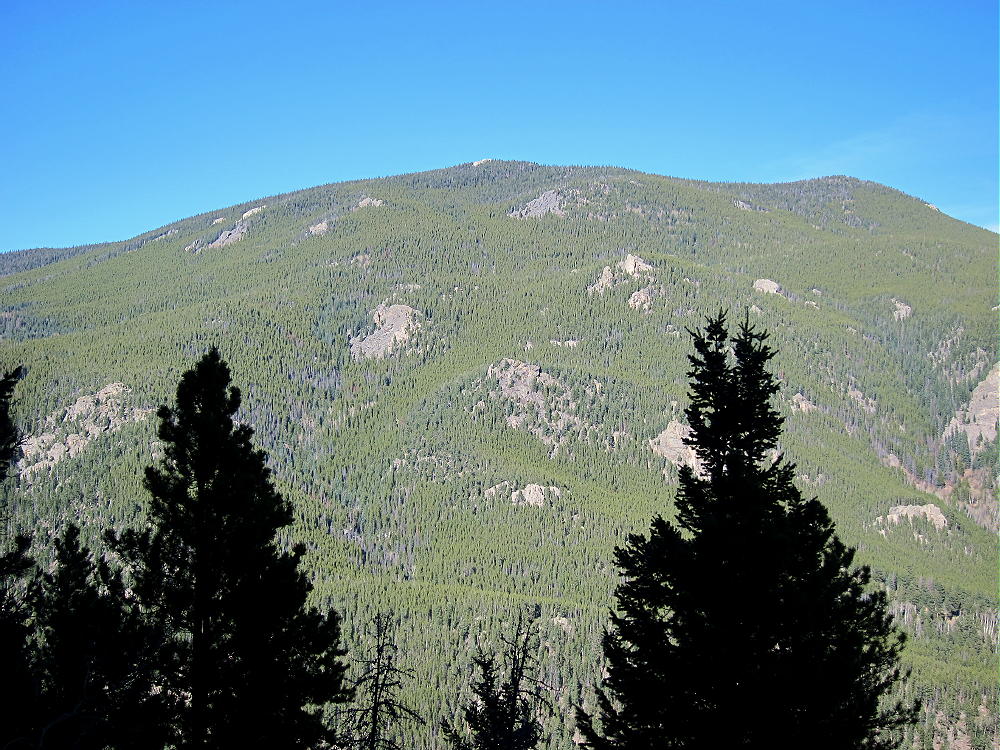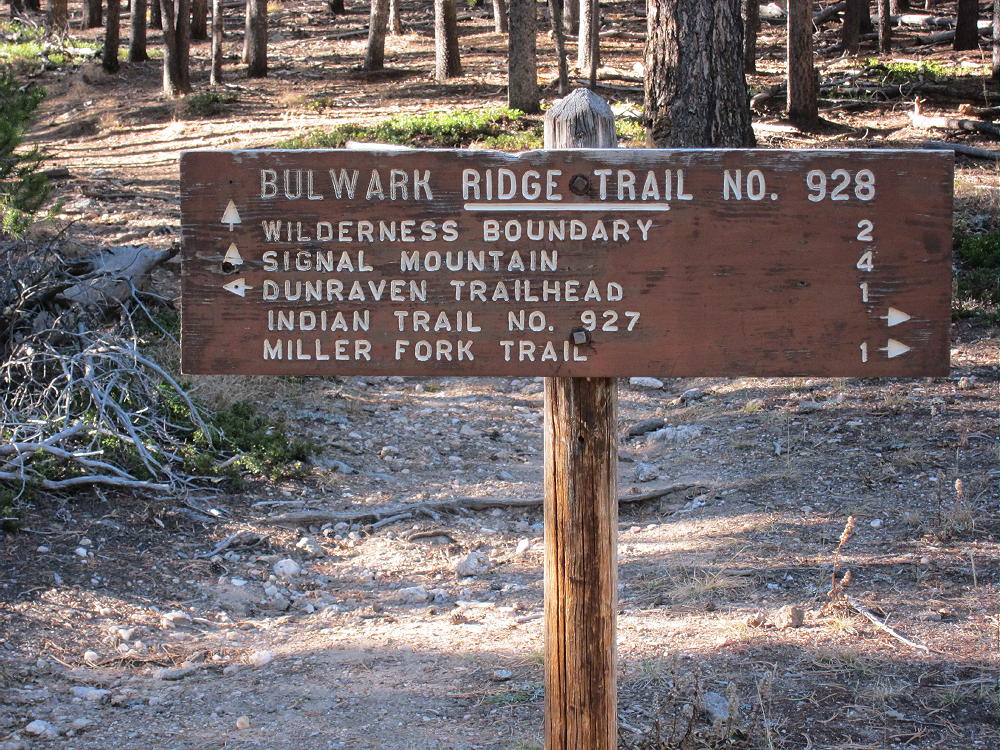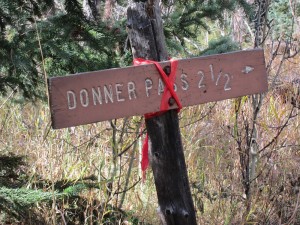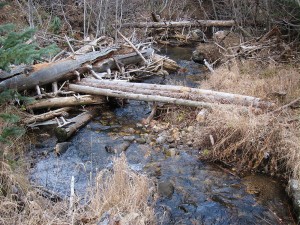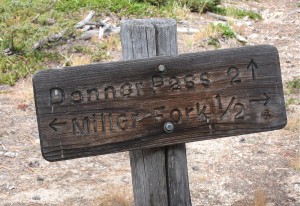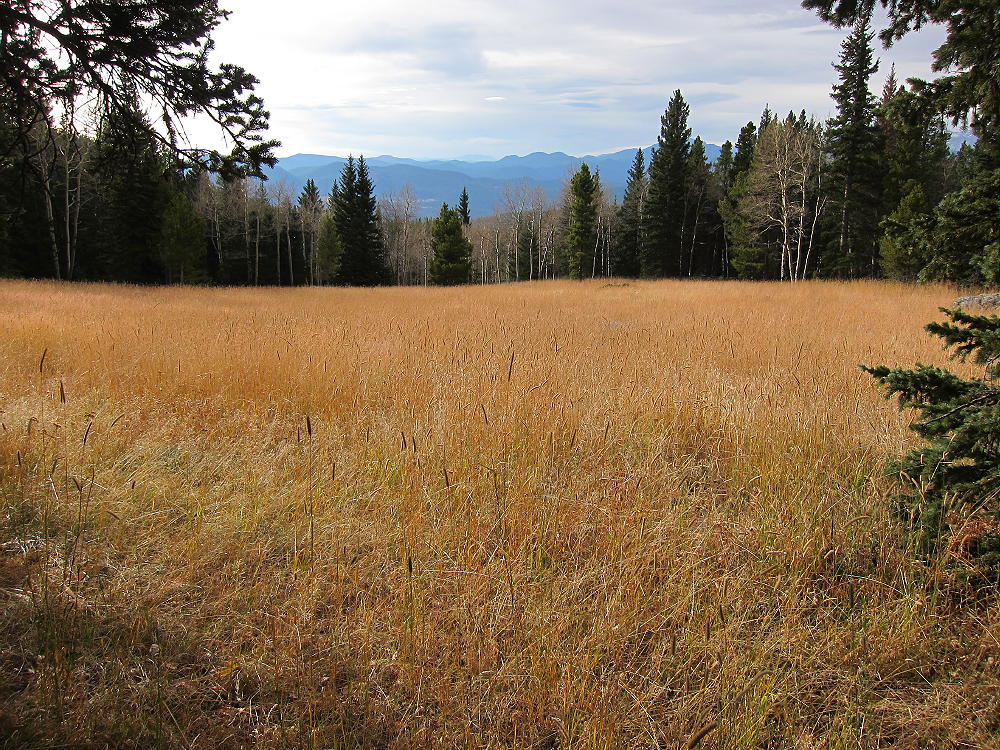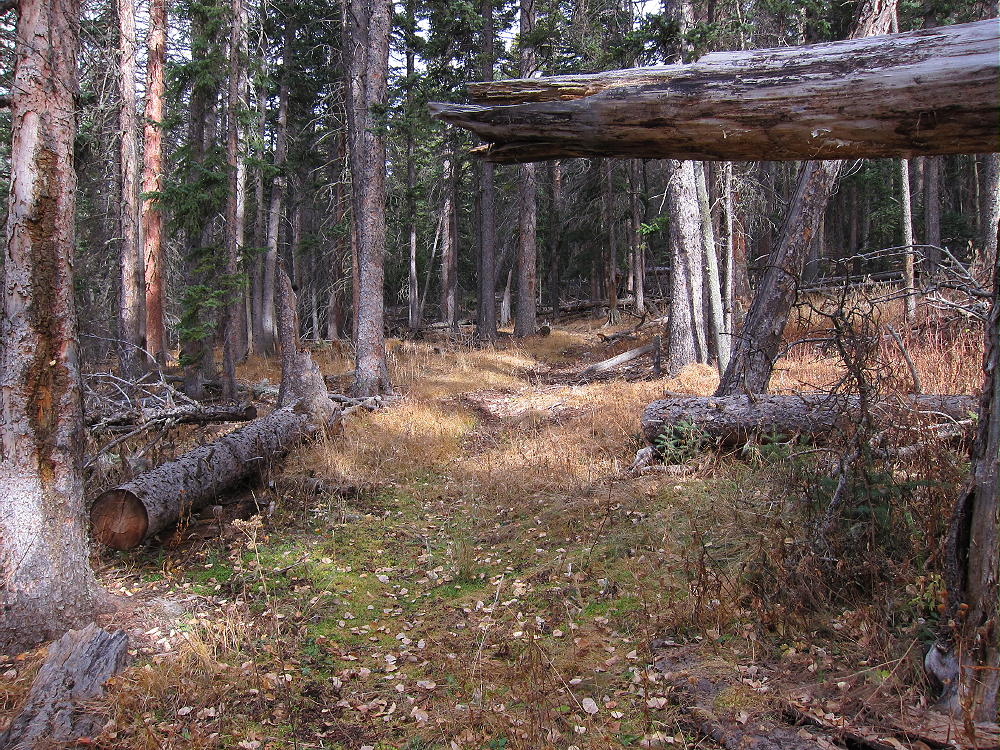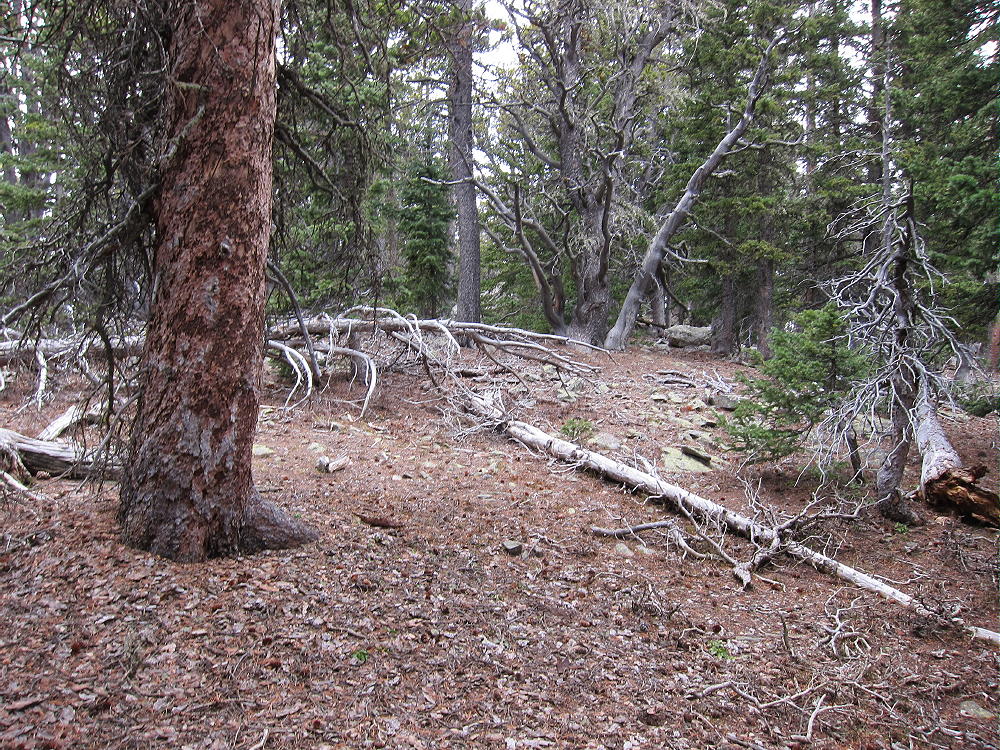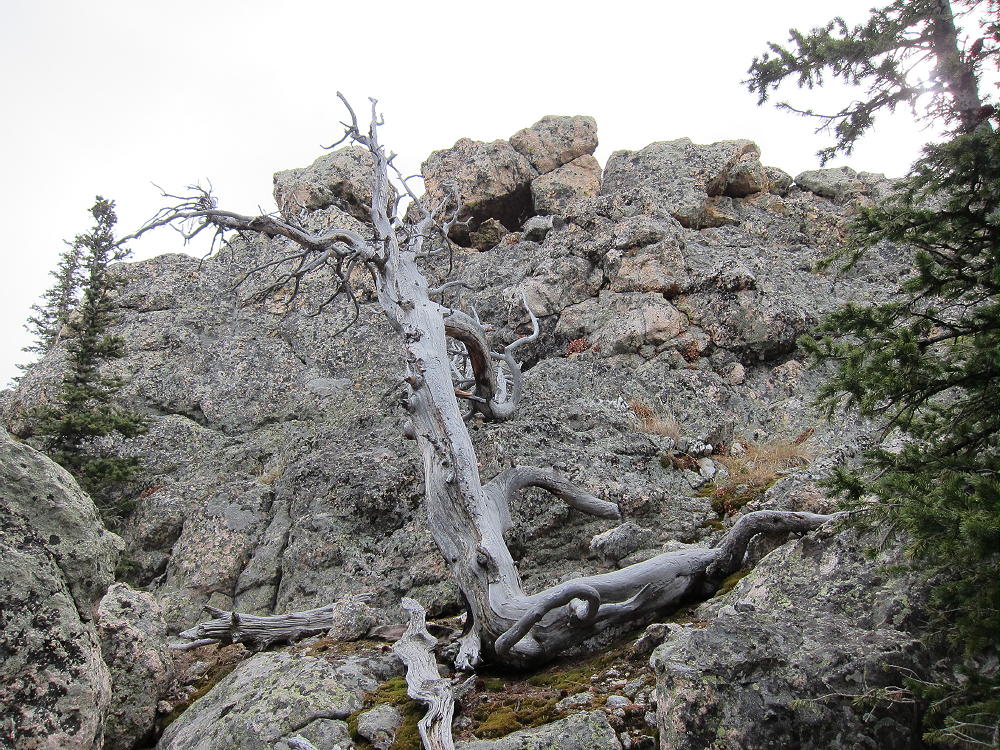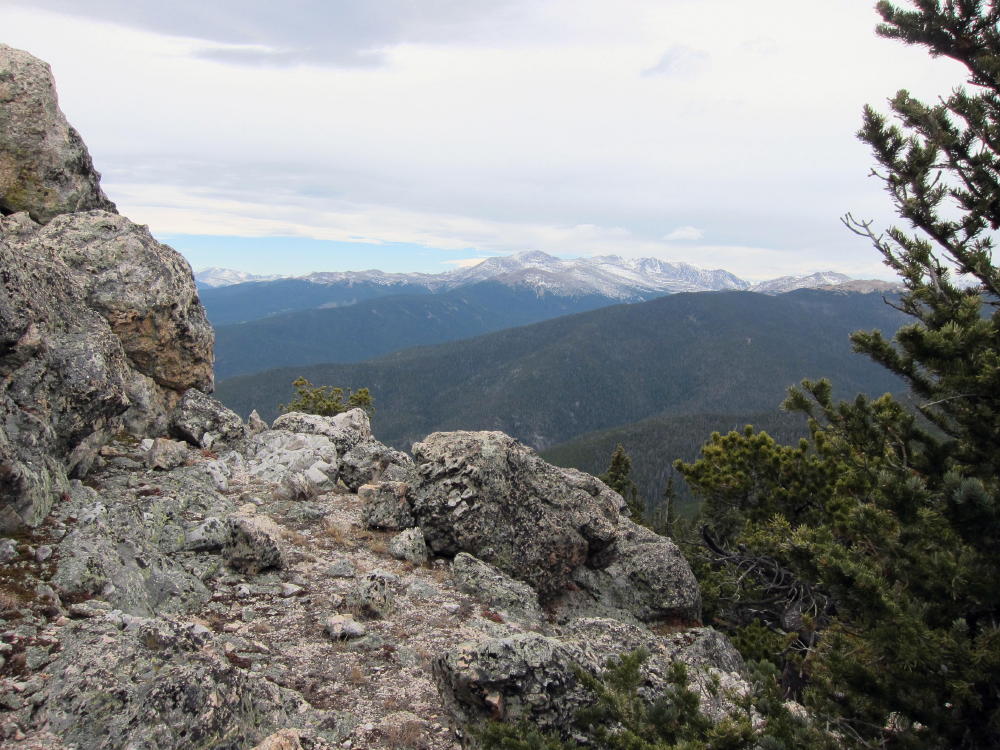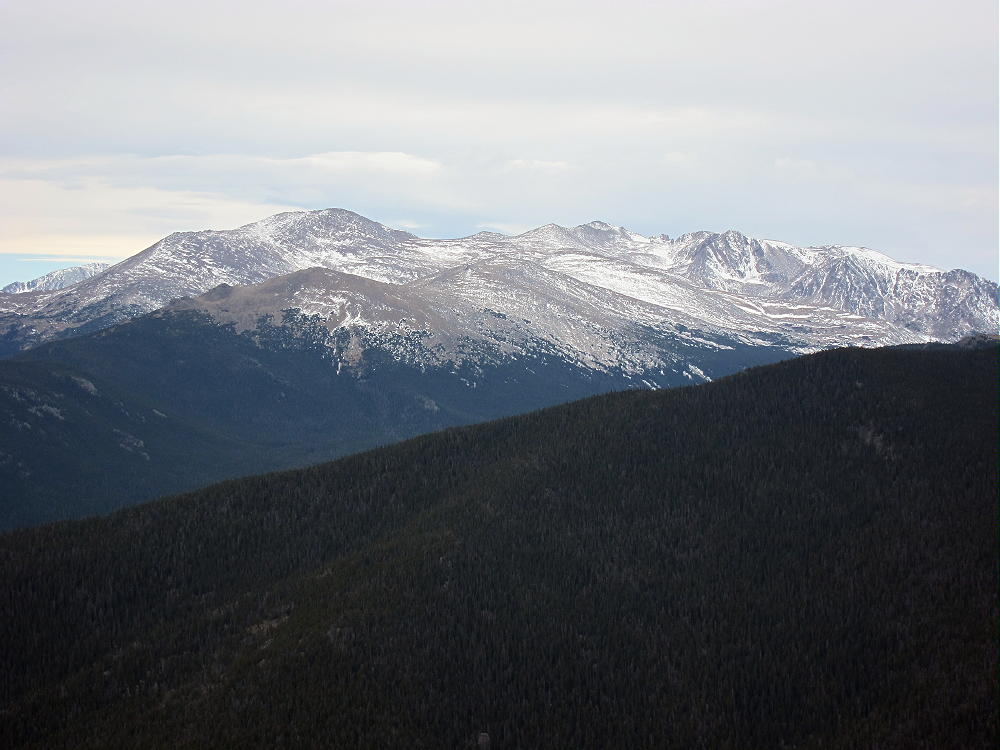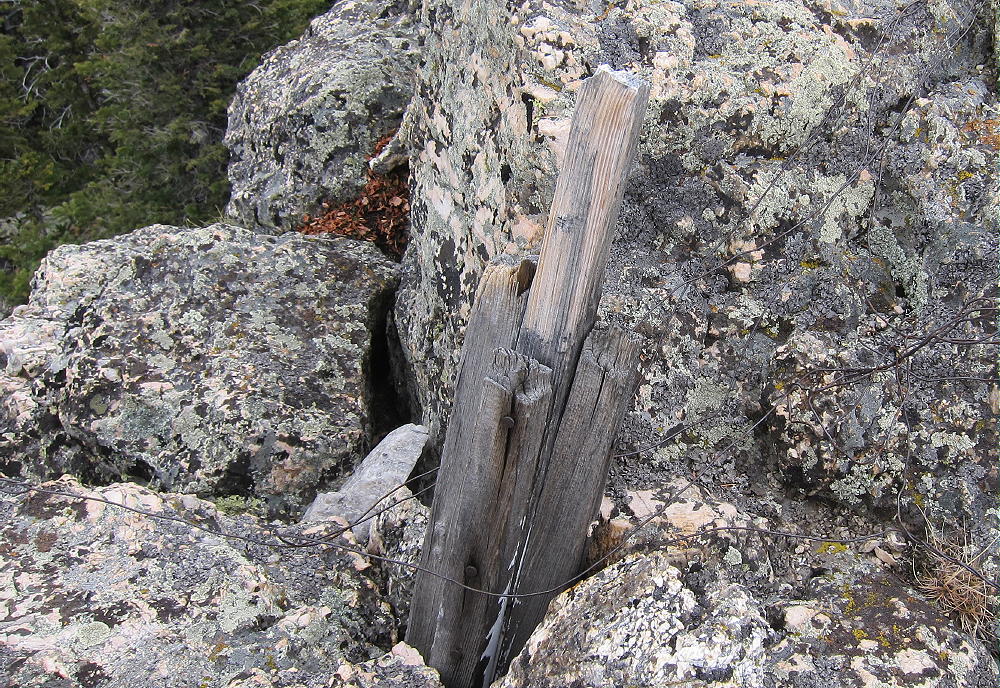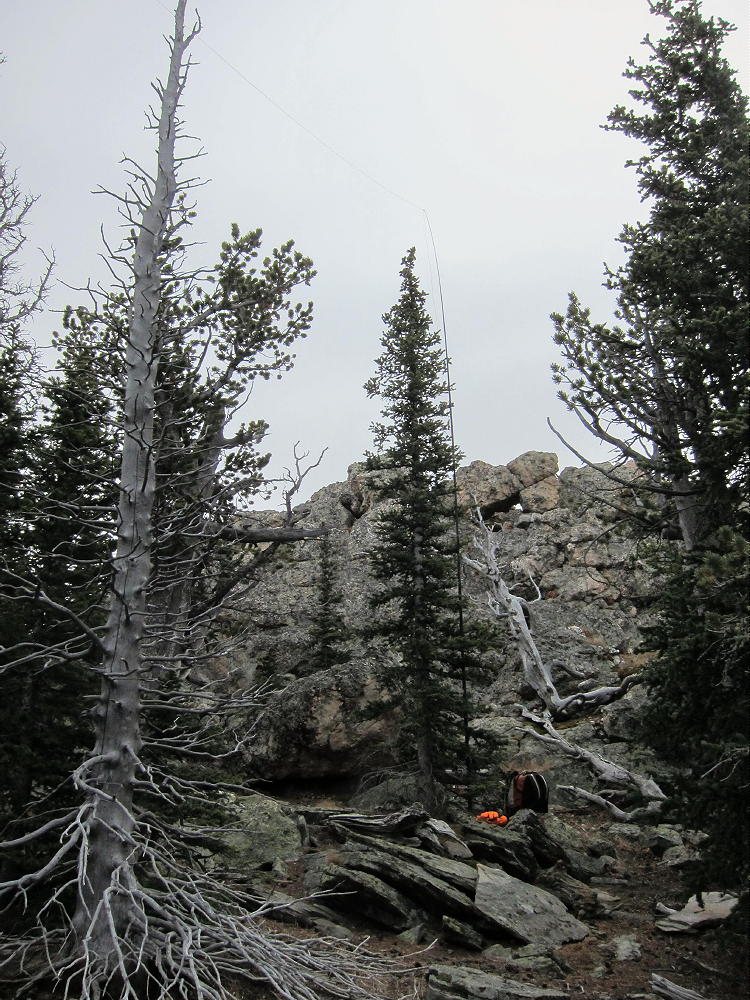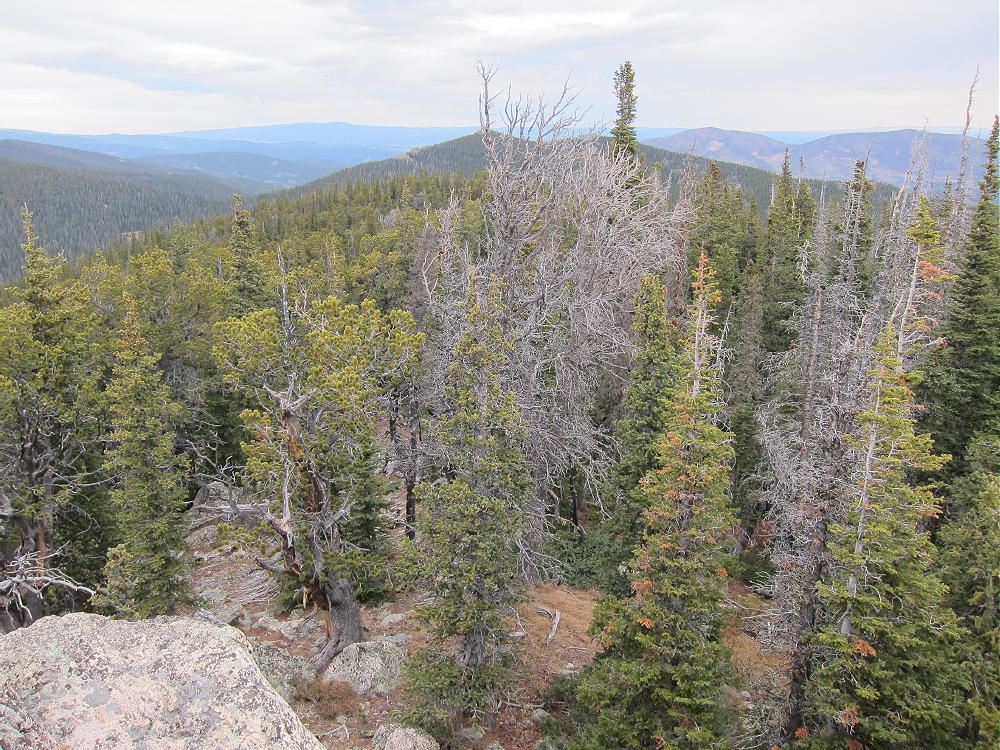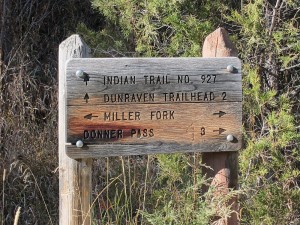W0C/FR-137
10720
3261 m / 10720 ft
First Activation
Nov 1, 2014
by KX0R
10720 is a seldom-visited summit located in the Roosevelt National Forest, several miles north of the flood-ravaged town of Glen Haven. Activating this peak requires a long, strong hike, culminating in a one-mile off-trail trip through the woods along the summit ridge. The summit itself is a prominent block with dramatic views of the mountains and plains of Northern Colorado and Southern Wyoming. This hike is a natural follow-up to activating Signal Mountain.
Drive toward Glen Haven from Estes Park on Road 43, or up from Highway 34 to Drake; find Dunraven Glade Road 51B; drive up this road almost 3 miles; and park at the convenient Dunraven Trail-head. This is the same trail-head as for Signal Mountain. Hike up the steep gated dirt road NW of the trailhead, and find the marked Bulwark Ridge Trail at the saddle at the high point of the road. Ascend the steep trail to about 8700 feet, and come to a signed junction with the Indian Trail.
If the hike seems really hard so far, I recommend you not follow the Indian Trail as it descends 1000 vertical feet down to Miller Fork. You will have to come back up this trail near the end of the hike, and it’s steeper than the Bulwark Ridge trail’s first section. The Indian Trail is a built trail, with many switchbacks, and it exists to get past the private land that blocks hiker-access to the Miller Fork drainage.
Once you drop down the Indian Trail, you can hike either up or down Miller Fork on a decent, scenic trail, as both routes connect eventually and go up to Donner Pass. Follow the signs to Donner Pass and stay on the trail.
- Donner Pass Sign near Miller Fork
- Miller Fork Creek Crossing
- Donner Pass Trail Sign
I traveled upstream less than a mile, where there is a marked fork to the right; there the trail crosses a tributary to Miller Fork and then heads up gently to the southeast, which is not intuitive. This is actually a very practical route. Don’t be fooled by the incorrect trail and other errors on Google Maps! Google Maps does not even show the Indian Trail descending to Miller Fork, or the Miller Fork Trail, or much of the well-built Donner Pass Trail. Instead Google shows an old abandoned trail – called Indian Trail – leading up a steep gulch; this is probably not a viable route now, due to floods and fallen trees.
Follow the Donner Pass Trail – it crosses some steep old logging roads, but don’t be tempted to short-cut up or down these. Stay on the trail and march a few miles, and you’ll be up the sub-alpine zone before you know it. There are a couple of nice viewpoints along the route. The entire Donner Pass approach is never very steep – but it is long. The trail climbs about 2500 vertical feet from Miller Fork to near Donner Pass, and then there are 520 additional feet along the one-mile summit ridge to 10720, for a total of about 3000 vertical feet.
As the route approaches Donner Pass, it passes by a beautiful meadow, and then the grade becomes very gentle – the only problem is fallen trees.
- Meadow along Donner Pass Trail
- Donner Pass Trail above 10,000 Feet
After a while Donner Pass is almost visible ahead, and you must choose whether to head northeast up to the ridge-line on the right, or keep going toward Donner Pass. If you cut up the slope too soon, you will be in a maze of fallen dead trees. Wait until the route looks easy, and then head up to the ridge, perhaps ¼ mile before Donner Pass – or go all the way to Donner and avoid the hassle. Once on the forested ridge, follow it southeast. This ridge leads over several small sub-peaks, through a goblin forest with large twisted trees, and through sections with some dead and downed trees.
There are hints of a game trail as the route climbs progressively to the summit. Near the summit the route steepens and finally leads up to a large block of crystalline pegmatite, which you must climb to see the stunning view.
- 10720 Summit Block North Side
- 10720 Summit View
- Mummy and Hagues Peaks from 10720
Remains of an old triangulation station – pieces of wood and wires – are on top of the summit rock.
There is also a register jar with a few names – amazingly, the peak is actually climbed by others. The day I did it, I found the name of a runner I met on the trail earlier that morning!
There are a couple of good spots to activate this mountain – I set up just northwest of the summit block, out of the wind, right on the ridge. With many useful trees on the site, you don’t really need a pole. Dead tree trunks are available to use as a mast, and you can also use the summit block!
For the return trip, just backtrack along the ridge toward Donner Pass.
If in doubt about where to descend, continue safely on to Donner Pass. If you descend too soon, you will find yourself in a hell of fallen trees on steep slopes!
I recommend using GPS with a topo map set to navigate this and other off-trail mountains. GPS navigation facilitates perfect backtracking, catches errors, and makes off-trail travel more efficient.
The return trip is fast and easy, down to the junction where the Indian Trail climbs back up to the Bulwark Ridge Trail.
This section is 1000 vertical feet up, and it will test your tired legs. From the top of the Indian Trail, there remains 1000 vertical feet back down to the parking area. The total vertical gain – and loss – is about 5000 vertical feet for the complete 14.9-mile round trip. The trail quality is much better than what Google Maps suggest. Donner Pass and 10720 may be climbed from the north and east, but I have not done this. It might be possible to reduce the amount of vertical gain by coming up from one of the alternate routes.
If you like activating Signal Mountain, by all means try 10720. The latter summit is longer and harder than Signal, because of the additional work required to descend and later ascend the Indian Trail. They make a nice pair, because each summit is visible from the other.
Unless you are Superman, forget about a dual activation of Signal and 10720 in the same day. However, if you are Superman, the way to do both summits together would be to climb Signal first, hike north one mile to the points near 10,500 feet, head southeast about 2.5 miles along the ridge toward Lookout Mountain, head for Donner Pass, and then pick up the ridge that leads southeast to 10720. To complete the loop hike, descend via the Donner Pass Trail to Miller Creek, and then return via the Indian and Bulwark Ridge trails. I have not tried this huge hike, so you are on your own – it would require a full day for sure!
10720 is a big hike with a SOTA activation of the Peak included for a nice rest break.
73
KX0R
George Carey Fuller
![]() !! WARNING !! There are old mountaineers, and
bold mountaineers... there are no old-bold mountaineers.
Hiking and mountain climbing are potentially hazardous activities particularly in Colorado with its extreme elevations. I am not accepting responsibility for any death or injury resulting from activations based on my trip reports. Proper training, experience, and personal capability assessment is required - enjoy!
!! WARNING !! There are old mountaineers, and
bold mountaineers... there are no old-bold mountaineers.
Hiking and mountain climbing are potentially hazardous activities particularly in Colorado with its extreme elevations. I am not accepting responsibility for any death or injury resulting from activations based on my trip reports. Proper training, experience, and personal capability assessment is required - enjoy!











